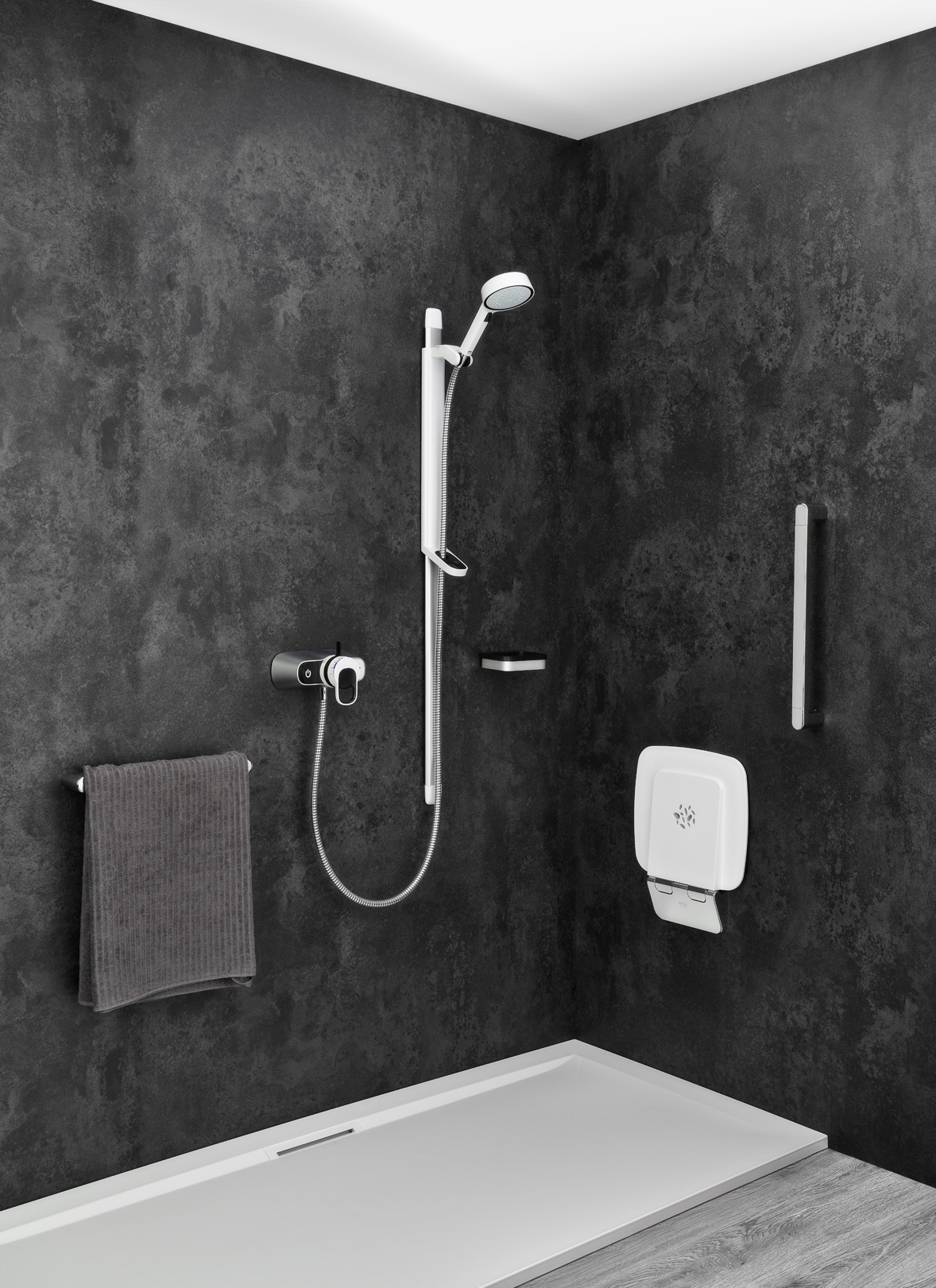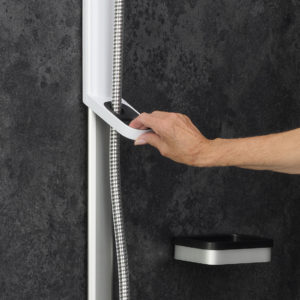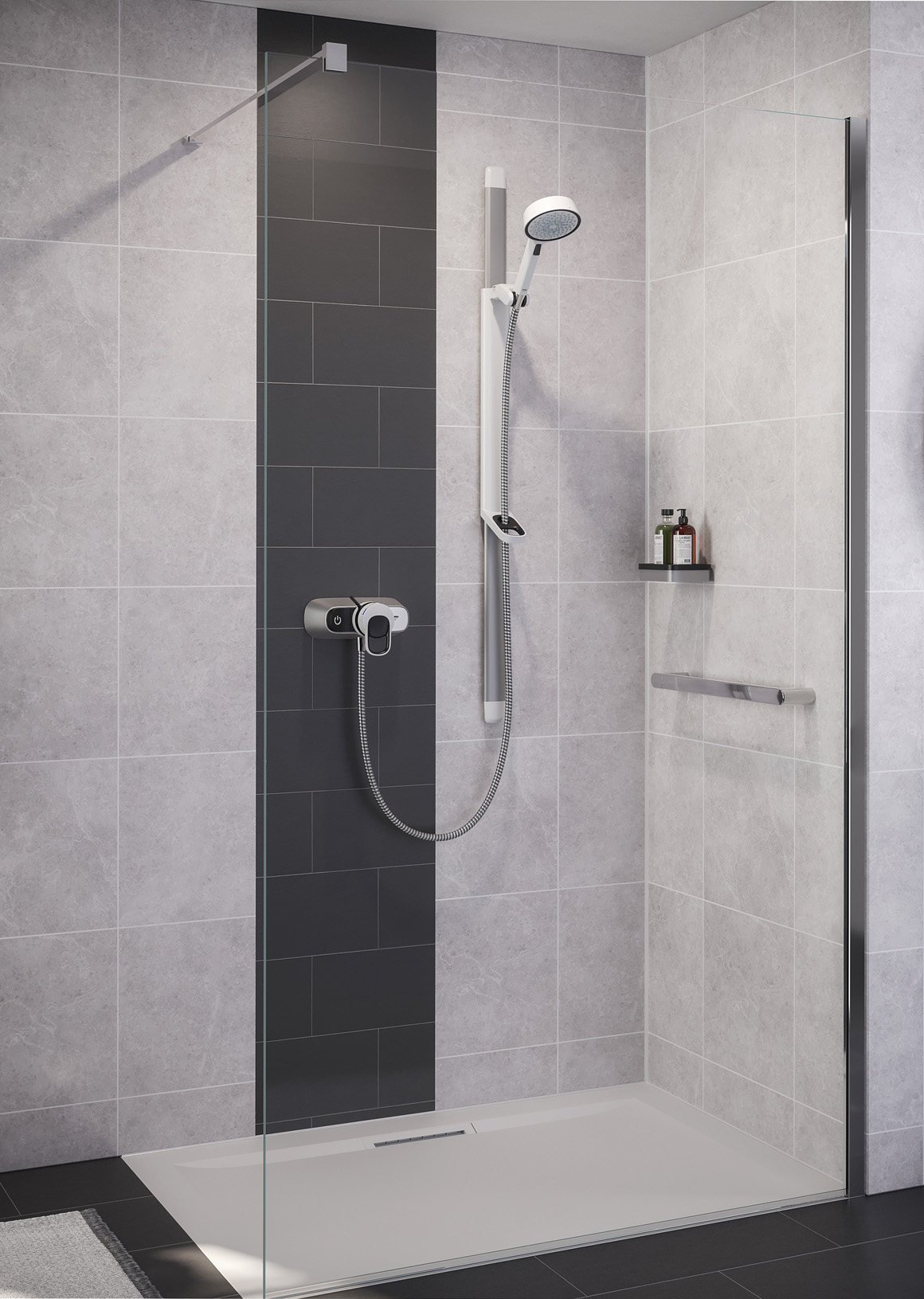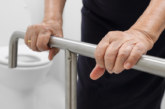
Suzannah Adey, Product Marketing Manager at Kohler Mira, tells LABM why shower design needs to be more than just about looking great.
The latest estimates from the Department for Work and Pensions’ Family Resources Survey indicate that around 16 million people in the UK had a disability in 2021/22, representing 24% of the total population. Additionally, with the average life expectancy in the UK now 80 years, designing an inclusive bathroom that facilitates independence and an enhanced showering experience should be a key consideration.
The need for a truly inclusive bathroom is further emphasised by the fact that 50% of the four million households in the social rented sector are multi-generational. Government data also revealed that around 2.2 million households had an occupant with a long-term illness or disability.
With that in mind, it’s important that shower manufacturers work collaboratively with industry experts and professional bodies, such as the Royal National Institute of Blind People (RNIB), to design innovative, easily accessible and safe shower systems that truly have the end user in focus.
A truly accessible showering experience starts with safe, inclusive design principles. Showers are where we all go to relax and unwind, either at the end of a long day or first thing in the morning to give that much-needed pick-me-up. Therefore, there is a need for an easily accessible, independent and safe showering experience to maintain a good quality of life.
Inclusive bathrooms, and especially showers, should therefore be designed to incorporate a myriad of safety aspects and features, such as TMV3-compliant thermostatic controls to keep heat stable and protect users from the risks of sudden fluctuations in water flow or temperature. Thermostatic showers prevent the risk of scolds, making the showering experience much safer and more enjoyable for all.
For users with limited dexterity, even turning a shower on can be a challenge. With that in mind, it’s important to implement features such as push button actuation and ergonomic lever handles to facilitate safer and easier shower adjustment.

Making life as easy as possible for those with visual impairments
With the RNIB revealing that an average of 250 people starting to lose their sight in the UK every day, supplying inclusively designed showers should be considered.
While polished chrome finishes are a popular choice for shower valves, reflective surfaces such as these can often blend into the background and provide a real challenge for the visually impaired. So, it’s essential that shower manufacturers incorporate high contrast colours, along with an anti-reflective surface to make showering controls more visible. Additional features such as raised icons and tactile graphics optimise the design for the visually impaired.
The use of contrasting textures and colours will help enhance the showering experience for the visually impaired while still adding a stylish and elegant aesthetic to any bathroom.
 Ensuring dignity and independence for all users
Ensuring dignity and independence for all users
No matter what the age or ability of the bathroom user, everyone deserves privacy, dignity and independence. Despite the challenges that exist, mobility and visual acuity should not be a barrier to achieving levels of freedom and independence. That’s why the specification and installation of an inclusively designed shower is so important.
Whether it’s offering effortless one-handed height adjustment through the use of extra-long, low-friction slide bars or an easy-grip, loop handle lever for shower adjustment, allowing users to shower safely and independently should be at the forefront of any inclusive bathroom design.
With retrofitting becoming an increasingly important aspect of sustainability standards, any shower system needs to be designed with this in mind. Incorporating an innovative and safe shower system into the existing plumbing network can make any bathroom and shower unit much more accessible and more suitable for the end user’s lifestyle.
Inclusive living is a vital part of any building design
With around 1.8 million multi-generational households in the UK, designing a new bathroom, including the shower, with inclusive living in mind is so important.
During the product development process, all user touchpoints should be considered and comprehensive user testing should be conducted. This will result in an effective and inclusive design, one that provides a safe and enjoyable showering experience for users with accessibility needs.

Extensive user testing during the design and manufacturing stages will also ensure the shower’s longevity following installation. Not only does this help contractors meet buildability standards, but it also provides the end user with the peace of mind of knowing their new shower system is built to last.
The showering area should be specifically designed to provide an enhanced accessible showering experience that can be used whether seated, standing or with the assistance of a carer. Often that requires looking beyond the traditional and incorporating the user at the centre of the design process, to make showering accessible for everyone. Thankfully, there are UK-based shower manufacturers who do use inclusive design principles to ensure those with limited dexterity, mobility or visual impairments can enjoy a great showering experience.
For more information on the Mira Select Flex Shower range, which benefits from an RNIB certified visually optimised design, visit www.mirashowers.co.uk/mira-select-flex









